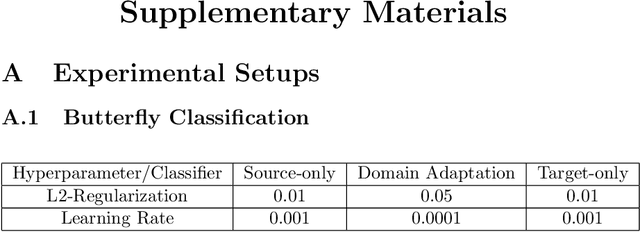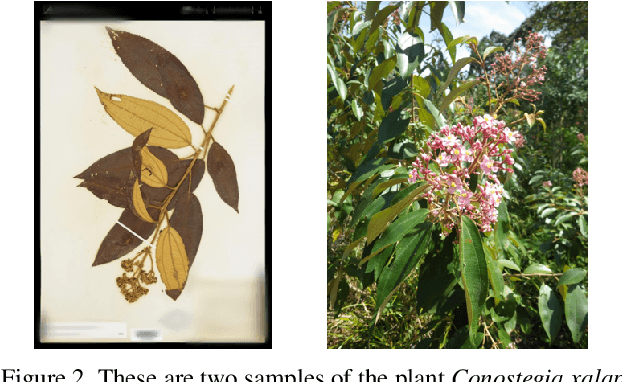Domain Adaptation and Active Learning for Fine-Grained Recognition in the Field of Biodiversity
Paper and Code
Oct 22, 2021



Deep-learning methods offer unsurpassed recognition performance in a wide range of domains, including fine-grained recognition tasks. However, in most problem areas there are insufficient annotated training samples. Therefore, the topic of transfer learning respectively domain adaptation is particularly important. In this work, we investigate to what extent unsupervised domain adaptation can be used for fine-grained recognition in a biodiversity context to learn a real-world classifier based on idealized training data, e.g. preserved butterflies and plants. Moreover, we investigate the influence of different normalization layers, such as Group Normalization in combination with Weight Standardization, on the classifier. We discovered that domain adaptation works very well for fine-grained recognition and that the normalization methods have a great influence on the results. Using domain adaptation and Transferable Normalization, the accuracy of the classifier could be increased by up to 12.35 % compared to the baseline. Furthermore, the domain adaptation system is combined with an active learning component to improve the results. We compare different active learning strategies with each other. Surprisingly, we found that more sophisticated strategies provide better results than the random selection baseline for only one of the two datasets. In this case, the distance and diversity strategy performed best. Finally, we present a problem analysis of the datasets.
 Add to Chrome
Add to Chrome Add to Firefox
Add to Firefox Add to Edge
Add to Edge